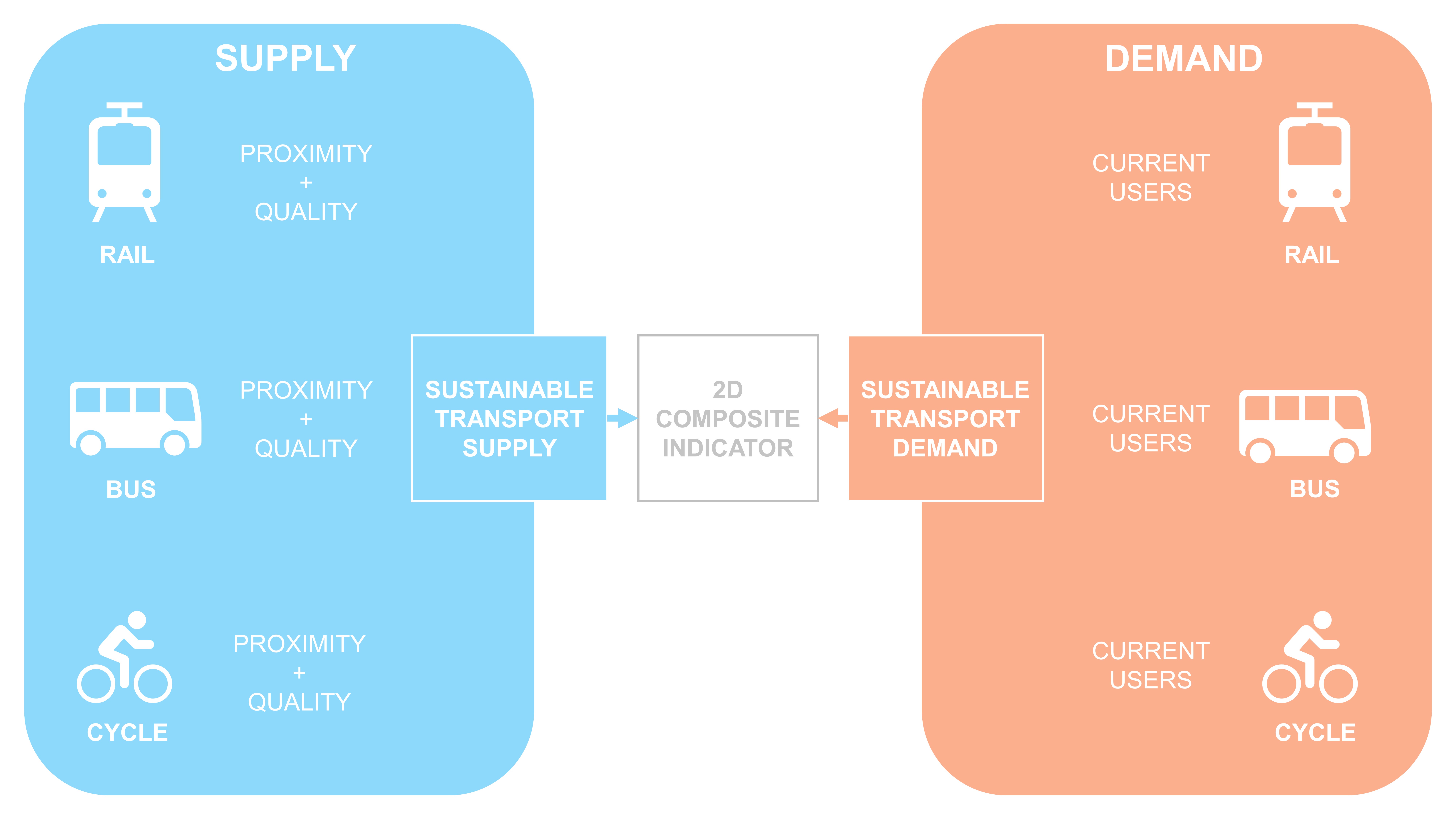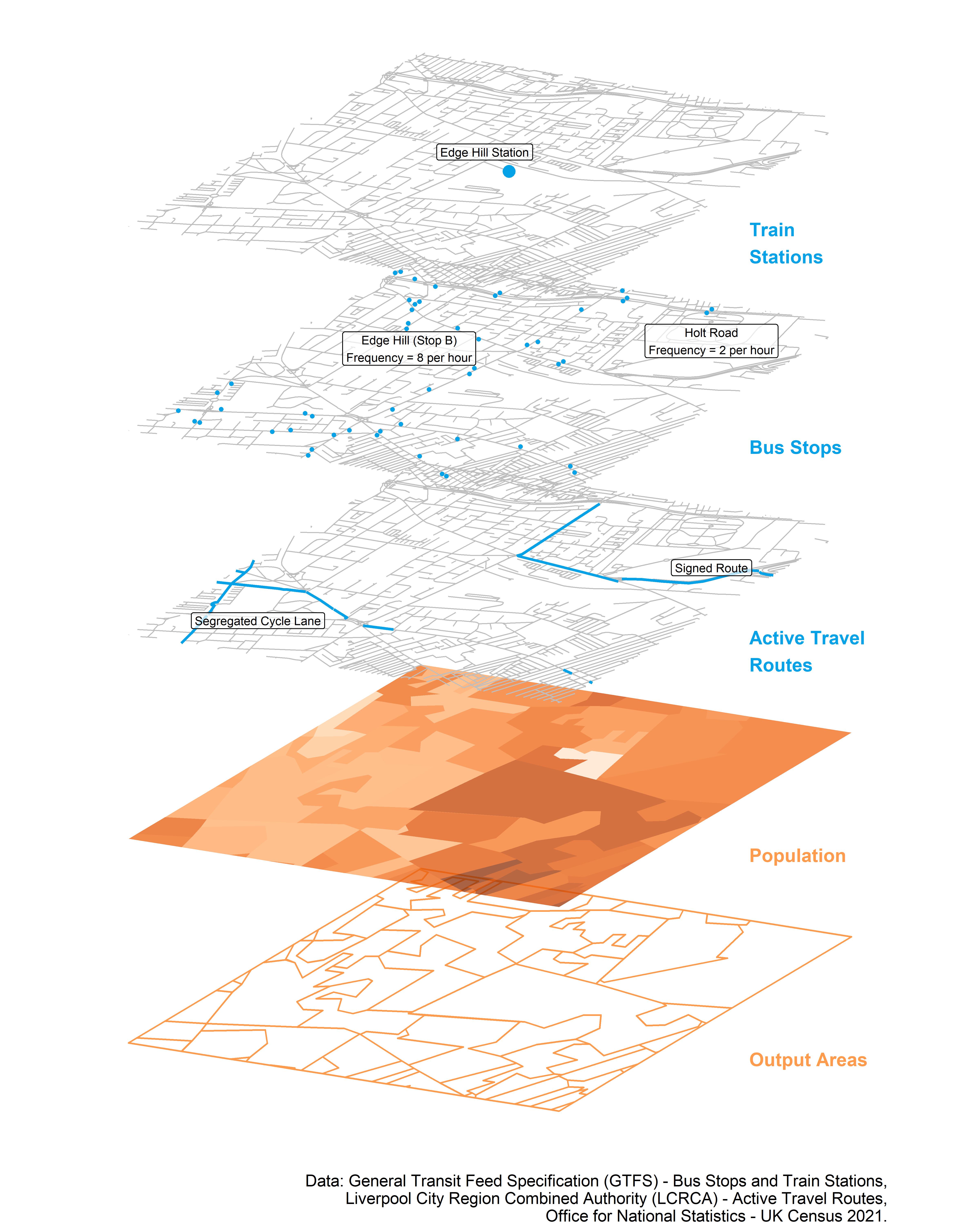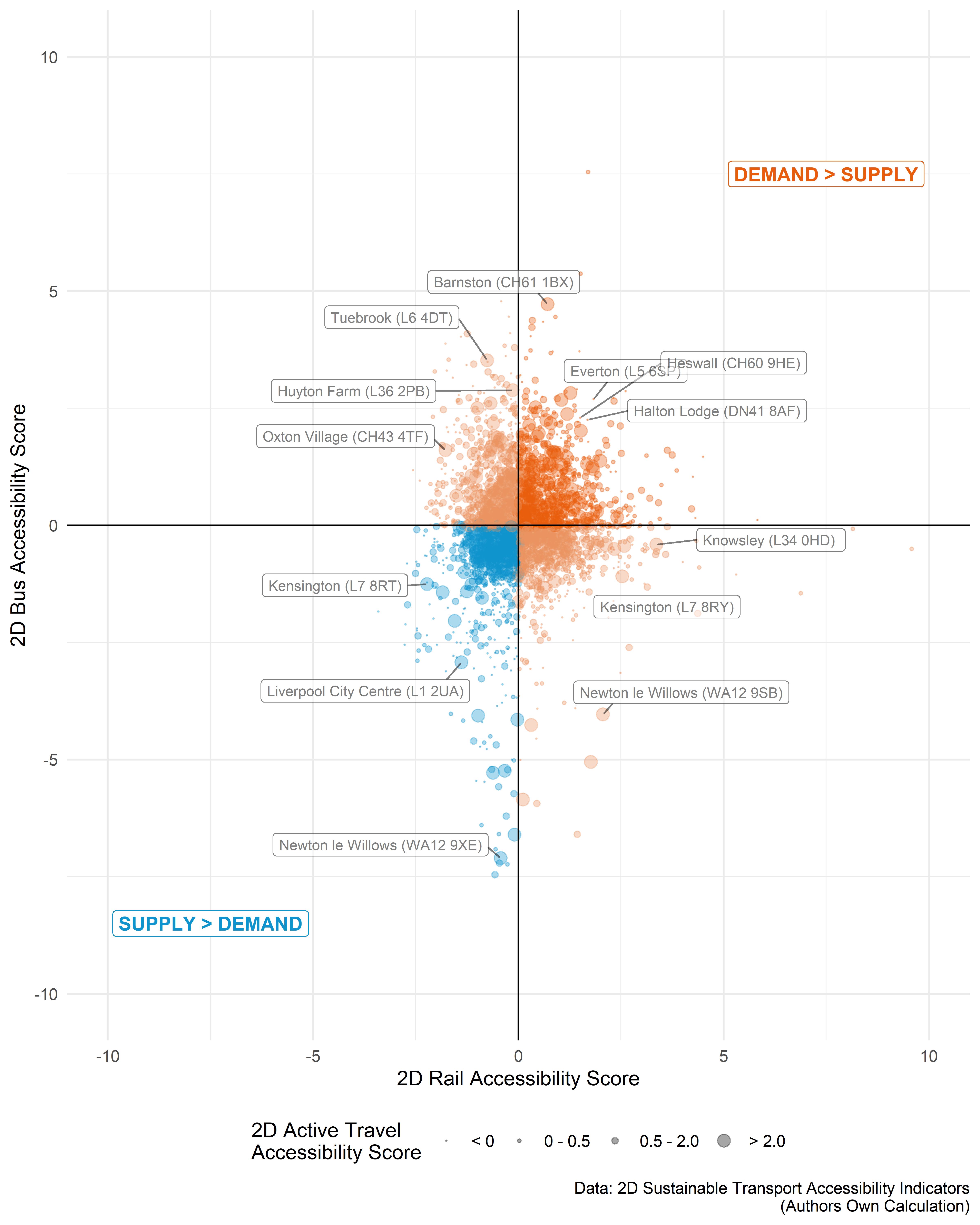Developing two-dimensional indicators of transport demand and supply at small area levels to promote sustainable transportation equity.
Computers, Environment and Urban Systems
Abstract
Inadequate supply of transport infrastructure is often seen as a barrier to a sustainable future for cities globally. Such barriers often perpetuate significant inequalities in who can and who cannot benefit from sustainable transport opportunities, and as a result there is momentum for transformative urban planning to promote sustainable transportation equity. This study introduces a new set of two-dimensional indicators, merging elements of supply and demand, to identify barriers and imbalances in sustainable transport equity. The accessibility indicators, which are generated for bus, rail, and cycle infrastructure, consider the proximity of administrative areas to good quality transport infrastructure, as well as mode-specific demand, to clearly identify areas where the supply of infrastructure is inadequate to support local populations. We present a policy case study for Liverpool City Region, which demonstrates how these indicators can be used in an analytical framework to support transformative urban planning in the long-term . In particular, the indicators reveal policy priority areas where demand for sustainable transport is greater than supply, as well as neighbourhoods where multiple transport inequalities are intersecting spatially, highlighting the need for specific types of infrastructure investment to promote sustainable transport equity (e.g. more frequent services, additional cycle paths). Our framework lays the foundations for improved decision-making in urban systems, through development of mode-specific sustainable transport indicators at small area levels, which harmonise elements of supply and demand for the first time.



Full Paper
The full paper has been accepted for publication at Computers, Environment and Urban Systems, DOI: https://doi.org/10.1016/j.compenvurbsys.2024.102179.